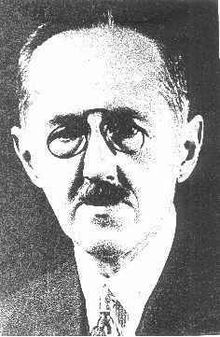
- Chess World Cup
- FIDE Grand Prix
- Olympiad
- World Championship
- List of strong tournaments
- List of world championships

- Checkmate patterns
- Chess openings
- Chess strategy
- Chess tactics
- Chess theory
- Endgames
- Pawn structure
- Problems/Compositions












Karel Treybal (February 2, 1885 - October 2, 1941) was a prominent Czech chess player of the early twentieth century.
 Karel Treybal
Karel TreybalTreybal was born in Kotopeky, a village to the southwest of Prague in central Bohemia. He trained as a lawyer and became chairman of the district court in Velvary, a small town on the opposite side of Prague. Although he played chess as an amateur, Treybal was a master who participated in several major international chess tournaments. He was a younger brother of František Treybal who was also a prominent Czech chess player.
In 1905, he tied for third/fourth in the first Czech Championships in Prague (Oldřich Duras won). In 1907, he tied for second/fourth in Brno (second CZE-ch; František Treybal won). In 1908, he won in Prague (B tournament). In 1909, he took second, behind Duras, in Prague (third Cze-ch). In 1921, he tied for first/third with Karel Hromádka and Ladislav Prokeš in Brno (seventh CZE-ch).
He played for Czechoslovakia in three Chess Olympiads.
He won team silver medal at Folkestone 1933.
Treybal's greatest international success was sixth place alongside Aron Nimzowitsch in the 1923 Karlovy Vary (Karlsbad) tournament. His performance featured a win against subsequent World Champion Alexander Alekhine.
Treybal died during the Nazi occupation of Czechoslovakia. On May 30, 1941, he was arrested, imprisoned and later charged with concealing weapons for use by resistance forces and the illegal possession of a pistol. It is not known whether these charges had any foundation. He was condemned to death and executed on October 2. Following his execution, his body was not handed over to his family and whereabouts of his grave or remains are unknown.
In 1945, a tribute to Treybal appearing in the Czech chess magazine Šach stated that Treybal had been executed without trial and had "never occupied himself with politics". Prokeš, following Treybal's death, published a monograph on him in 1946.